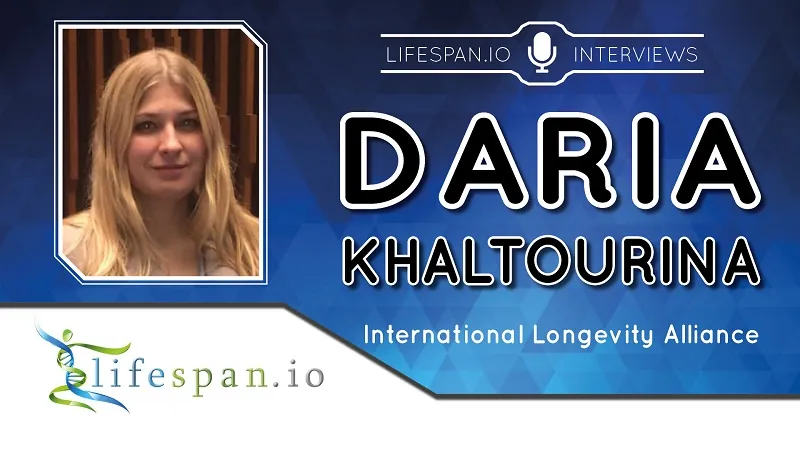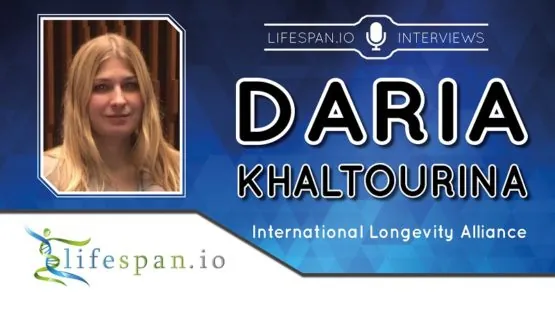We are pleased to report that lobbyists have made more progress towards classifying aging as a disease. The World Health Organization (WHO) has implemented the extension code ‘Ageing-related’ (XT9T) in the latest version of the International Classification of Diseases (ICD).
The inclusion of the new code is thanks to the efforts of activists at the Biogerontology Research Foundation (BRF), the International Longevity Alliance (ILA), and the Council for Public Health and the Problems of Demography (CPHD). The proposal was developed by Daria Khaltourina (ILA), Anca Ioviţă (ILA), Franco Cortese (BRF), Yury Matveyev (CPHD), and Aleksey Alekseev (CPHD) with support from Alex Zhavoronkov of Insilico Medicine and other researchers in the field.
The impact of their work has been so successful that the news has even appeared in The Lancet, a prestigious weekly medical journal, where their success was reported most favorably.
What is the ICD?
In this short video, the WHO explains what the ICD is and why it is so important.
The previous version, the ICD-10, was released in 1983 and is now replaced by the new version, the ICD-11, which is expected to serve the medical community for many years, much as its predecessor has.
The new extension code
In the new ICD code, ‘ageing-related’ means “caused by pathological processes which persistently lead to the loss of organism’s adaptation and progress in older ages”. This is an important step forward for our field because ICD codes are a prerequisite for the registration of new drugs and therapies. It also marks the recognition that aging is a pathological process and represents a solid step forward in overcoming regulatory barriers to developing therapies that directly target the aging processes themselves.
This is also particularly good news, as WHO reports that by 2050, around 2 billion people (22% of the world’s population) will be age 60 or over. In 2015, that number was only 900 million (around 12%), but thanks to globally rising life expectancies, that number is soaring rapidly. It is projected that by 2020, there will be more people over 60 years old than children under 5.
This is commonly referred to as the “Silver Tsunami”, and it is a real concern because society will become increasingly unable to cope with the rising numbers of elderly and potentially sick people, as aging is the greatest risk factor for multiple age-related diseases. The solution to this problem is to develop therapies that address the aging processes to keep older people healthy, active, and contributing to society rather than being burdens on healthcare systems, and that is without even considering the personal benefit of keeping people alive and healthy.
While the inclusion of the new code in the ICD-11 cannot be regarded as the WHO officially accepting aging as a disease, it does show that the WHO recognizes that aging is the primary risk factor for age-related diseases such as cancer, diabetes, atherosclerosis, Parkinson’s, Alzheimer’s, amyloidosis, and osteoarthritis. This is good news, as we need a solution to the impending silver tsunami and the public health problem it poses.
We asked Dr. Aubrey de Grey, a leading biomedical gerontologist, what he thought about the new code.
The ICD is not just a taxonomy. It greatly influences how drugs are prescribed in most nations, because a physician’s justification for writing a prescription must typically be documented in terms of an ICD code describing the diagnosis. As such, the addition of an extension code to denote aging may have a really huge impact on the financial rewards that drug developers can expect to reap if they bring treatments for age-related ill-health to the market.
Is aging a disease?
There is also considerable debate as to if aging is a disease or not; we propose that it is a co-morbid syndrome and that aging fits the medical definition of a syndrome in every way as defined by the British Medical Association [2].
A syndrome is a set of medical signs and symptoms that are correlated with each other and, often, with a particular disease or disorder.
This really does describe aging perfectly: it is a group of symptoms (hallmarks) that consistently occur together and is a condition characterized by a set of associated symptoms. Ultimately, aging is an umbrella term describing a range of pathological changes; it may struggle to be accepted as a disease, but it already qualifies as a syndrome.
Regardless of semantics, one thing is clear: aging leads to pathology and to the diseases of old age, and it is a problem that needs to be addressed urgently for both personal and societal benefits. The next step will be for lobbyists to push forward to get WHO to officially recognize aging as a pathological process with identifiable and quantifiable clinical indications that can be intervened upon.
We had the opportunity to catch up with Daria Khaltourina, a member of the team of lobbyists who worked on the proposal and talk with her about the new code.
Why do you think there is so much resistance to the idea that aging, or at least its constituent processes, is a disease?
The idea that aging is a disease breaks the traditional worldview. People are used to thinking that aging is normal, and now it suddenly becomes a challenge to work against. Some people even approve it, welcoming generation change, which reminds me of Stockholm syndrome, as aging ultimately brings horrible diseases like stroke and cancer.
Some researchers resist calling aging a disease for semantic reasons. But, since a united definition of disease is lacking, these discussions can go on forever. Yet, there is a practical need to alleviate the burden of aging-related pathologies, which are not separate processes but are highly interconnected. We need to classify aging as a disease to officially enable the development of drugs and clinical practice guidelines to prevent and treat aging-related health damage.
Can you explain why clinical trials are important and why we need them to develop therapies against aging?
Human organisms are very complex and fragile, and the science does not yet explain comprehensively how our body works. Clinical trials are the only kind of properly organized scientific experiments specifically designed to test our guesses about the safety and effectiveness of medicines and other therapies.
Historically, the whole legislative framework for clinical trials comes from the Nuremberg Code, a set of research ethics principles for human experimentation set as a result of the subsequent Nuremberg trials at the end of the Second World War. Further, it was complemented by the Declaration of Helsinki, a set of ethical principles regarding human experimentation developed for the medical community by the World Medical Association. This led to the development of Good Clinical Practice (GCP), the international quality standard for clinical trials, which is being incorporated into the national legislation of many countries.
Promoting untested cures even with good intentions can eventually result in people experiencing the worst kinds of suffering. The same might happen sometimes to paid participants in clinical trials. The difference between clinical trials and self-experimentation is in global medical knowledge accumulation, which helps to prevent adverse effects and cure diseases in the future.
Publishing failed clinical trial results is also crucial because it stops wasting resources while aging and diseases are taking a toll on human life.
People might think that organizing a clinical trial is nearly impossible because it requires up to a billion dollars, which is a large figure even for the US. Yet, in cheaper countries like Russia, according to my knowledge, a full cycle of high-quality FDA/GCP-compliant clinical trials for a cheap drug might cost as little as 1 million USD, and for a gene or cell therapy, it might cost about 10 million USD.
Therefore, life extensionists should not avoid but rather promote the idea of new clinical trials on anti-aging cures.
How do you think the new code could help researchers, particularly in clinical trials? Can you describe how such a code might be used in a clinical trial?
Many aging-related syndromes and conditions have specific underlying mechanisms compared to those driven by infections or toxins. For example, aging-related immune deficiency is caused by programmed cessation of T-cell regeneration, while aging-related vascular pathologies are exacerbated by vascular elastic layer loss. Since these pathologies have special codes now, new treatments that address specific mechanisms of aging can be developed.
If effective T-cell regeneration methods are developed, this might result in a measurable decrease in mortality in older adults, at least due to flu and pneumonia. In this case, medical insurance organizations would have to include such life-saving therapies into their programs. In fact, every person after 60 years old would have such treatment prescribed, just as is the case now with pneumococcal vaccines. This makes the development of anti-aging technologies more lucrative for biomedical investors than before.
Do you think that these changes may be enough to encourage pharmaceutical companies to move into anti-aging drug development, and why?
Such changes look forthcoming, but they still might require some advocacy work to promote new opportunities to biomedical and pharmaceutical companies, in terms of both priority change and identification of the most promising R&D direction.
Can you explain the significance of the “Ageing-related” extension code, and does it relate to a reimbursement scheme, grants, or anything similar that currently exists in any country?
In general, of course, it is possible to get the payments for effective anti-aging technologies reimbursed by governments and insurance companies. The reimbursement schemes are decided nationally, and in each country, the process is different.
What will be the next step for your team in regards to making additions to the ICD?
We, as a group of the ICD proposal’s co-authors, are preparing papers for publication that explain our views. We will continue to advocate classifying aging as a disease, while a better description of specific aging-related conditions might also be helpful. Further progress in promoting the development of effective anti-aging therapies for clinical practice requires consultations with the medical community, including gerontologists, regulators, and biomedical, pharmaceutical, and insurance companies.
What can people do to get involved with your efforts?
People with biomedical and medical backgrounds could take part in writing research and analytical papers. IT specialists might help us with information management. Other longevity activists might help by generally promoting the cause and promoting specific campaigns, as has happened twice in promoting aging as the agenda of the World Health Organization. Strong support from the longevity community is instrumental.
What do you think will happen in aging research in the next 10-20 years; do you think we could have some effective therapies during this time?
I hope that we will have at least effective senolytics tested for primary prevention in high-quality clinical trials (longer than the currently published clinical trials of quercetin) and prescribed by the doctors all over the world if this approach turns out to be safe and effective.
Do you have a final take-home message for our readers?
Aging is the number one killer, so fighting aging is the most meaningful activity in the world.
We would like to thank Daria for taking the time to do this interview with us and give us some insight into how this step forward happened.
Conclusion
It remains to be seen if the inclusion of the new code will make it easier to develop therapies that directly target aging; however, progress will continue regardless. Naturally, we are in favor of anything that could make that progress easier, and we hope that these positive changes will encourage the pharmaceutical industry to throw its weight behind research focused on targeting the aging processes. Time will tell.
Literature
[1] The, L. D. E. (2018). Opening the door to treating ageing as a disease. The lancet. Diabetes & endocrinology, 6(8), 587.
[2] The British Medical Association (BMA) (2002). Illustrated Medical Dictionary. A Dorling Kindersley Boo. p. 536




